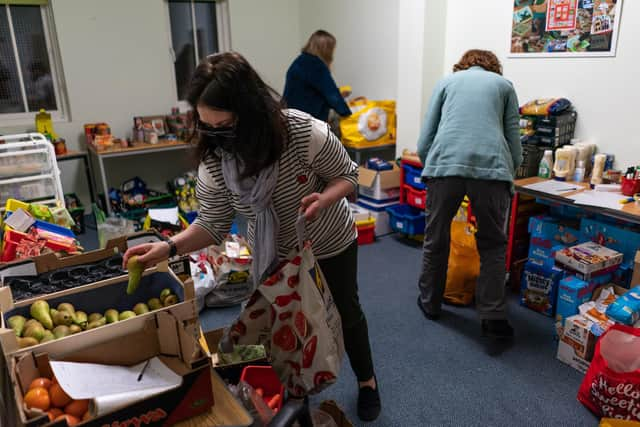Cost of living crisis in Leeds: Research pinpoints areas most at risk
and live on Freeview channel 276
The researchers’ Financial Vulnerability Index scores an area from 1 to 100, with higher numbers signifying greater financial vulnerability.
It combines analysis of Lowell’s 9.5 million customer accounts with official statistics from the UK Government and Office for National Statistics.


Advertisement
Hide AdAdvertisement
Hide AdIt is based on six components that capture a household’s ability to manage daily finances and resist economic shocks: carrying debt in default, using alternative financial products such as payday loans, claiming work-related benefits, lacking emergency savings, holding a high-cost loan and relying heavily on credit.
The Leeds East area has the highest FVI score in the city at 61.4.
This is against an average score of 45.1 for the country and the area is 18th highest on the list of the whole of the UK for these scores.
More than a quarter of constituents in Leeds East are claiming social benefits according to the data.
Advertisement
Hide AdAdvertisement
Hide AdThe area most likely to be able to withstand the additional financial pressures is Leeds North West.
The area has an FVI score of 44.3 - lower than the average for the country.
Many households in major cities like Birmingham, Liverpool and Manchester have been left financially “scarred” by the coronavirus pandemic, with high-cost debts and little in the way of savings.
It means they are far more vulnerable to the further economic shock of the cost of living crisis, according to the study by debt collection company Lowell and the US-based Urban Institute think-tank.
Advertisement
Hide AdAdvertisement
Hide AdThe researchers said people in these areas are still grappling with the effects of the pandemic, despite the recovery seen elsewhere.
“Many constituencies in these cities saw high levels of vulnerability before the pandemic, something that was exacerbated by successive lockdowns,” the study said.
“These areas have become ‘scar tissue’, immune to the general upswing in the economy seen as the pandemic ebbed.”
Birmingham, Manchester, Liverpool, Leicester and Newcastle are the biggest cities with this scarring effect, only seeing marginal improvement in their financial vulnerability since the peak of the pandemic.
Advertisement
Hide AdAdvertisement
Hide AdJohn Pears, UK CEO of Lowell, said: “Right now, everyone’s talking about the increased cost of living, but the impact won’t be the same everywhere.
“There are lots of communities that still aren’t back to how they were before the pandemic and they are being hit again.
“With rising energy and food prices, we hope that these areas get the support they need, or the Government run the risk of levelling down in some of our biggest cities.”
Signe-Mary McKernan, Vice President for Labour, Human Services, and Population at the Urban Institute, said: “While the United Kingdom overall experienced improvement in financial vulnerability, gaps remained in several regions, and high financial vulnerability persisted in places like Liverpool, Middlesbrough, and Birmingham.
Advertisement
Hide AdAdvertisement
Hide Ad“As policymakers look to guide recovery, supporting the financial health of residents can help families cope with inflation and stabilise communities.”
Support the YEP and become a subscriber today. Enjoy unlimited access to local news and the latest on Leeds United, With a digital subscription, you see fewer ads, enjoy faster load times, and get access to exclusive newsletters and content. Click here to subscribe.
